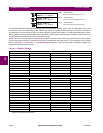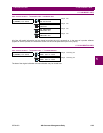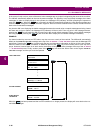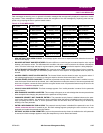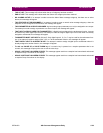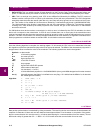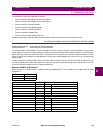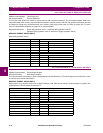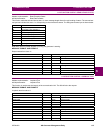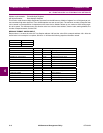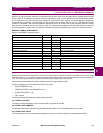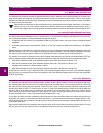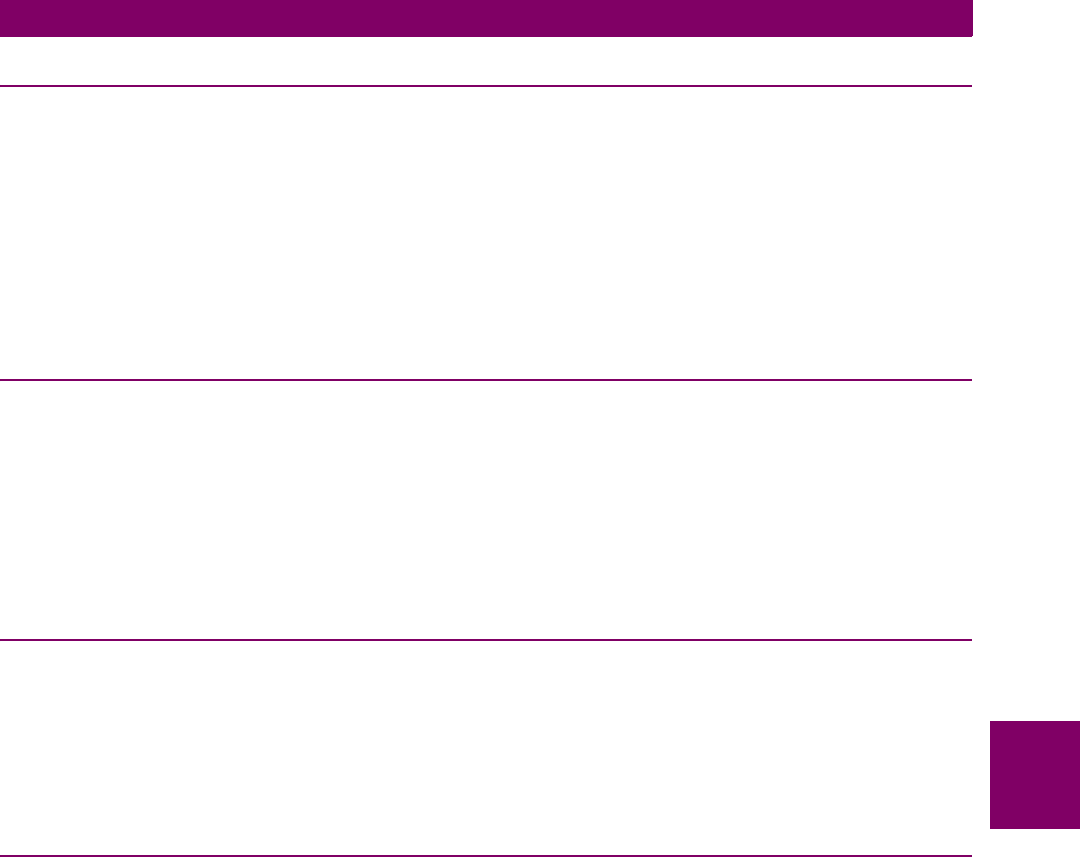
GE Multilin 489 Generator Management Relay 6-1
6 COMMUNICATIONS 6.1 MODBUS PROTOCOL
6
6 COMMUNICATIONS 6.1MODBUS PROTOCOL 6.1.1 ELECTRICAL INTERFACE
The hardware or electrical interface is one of the following: one of two 2-wire RS485 ports from the rear terminal connector
or the RS232 from the front panel connector. In a 2-wire RS485 link, data flow is bidirectional. Data flow is half-duplex for
both the RS485 and the RS232 ports. That is, data is never transmitted and received at the same time. RS485 lines should
be connected in a daisy chain configuration (avoid star connections) with a terminating network installed at each end of the
link, i.e. at the master end and at the slave farthest from the master. The terminating network should consist of a 120 Ω
resistor in series with a 1 nF ceramic capacitor when used with Belden 9841 RS485 wire. The value of the terminating
resistors should be equal to the characteristic impedance of the line. This is approximately 120 Ω for standard #22 AWG
twisted pair wire. Shielded wire should always be used to minimize noise. Polarity is important in RS485 communications.
Each '+' terminal of every 489 must be connected together for the system to operate. See Section 2.2.12: RS485 Commu-
nications Ports on page 2–14 for details on correct serial port wiring.
6.1.2 MODBUS RTU DESCRIPTION
The 489 implements a subset of the AEG Modicon Modbus RTU serial communication standard. Many popular program-
mable controllers support this protocol directly with a suitable interface card allowing direct connection of relays. Although
the Modbus protocol is hardware independent, the 489 interfaces include two 2-wire RS485 ports and one RS232 port.
Modbus is a single master, multiple slave protocol suitable for a multi-drop configuration as provided by RS485 hardware.
In this configuration up to 32 slaves can be daisy-chained together on a single communication channel.
The 489 is always a slave; it cannot be programmed as a master. Computers or PLCs are commonly programmed as mas-
ters. The Modbus protocol exists in two versions: Remote Terminal Unit (RTU, binary) and ASCII. Only the RTU version is
supported by the 489. Monitoring, programming, and control functions are performed with read / write register commands.
6.1.3 DATA FRAME FORMAT AND DATA RATE
One data frame of an asynchronous transmission to or from a 489 is default to 1 start bit, 8 data bits, and 1 stop bit. This
produces a 10-bit data frame. This is important for transmission through modems at high bit rates (11 bit data frames are
not supported by Hayes modems at bit rates of greater than 300 bps). The parity bit is optional as odd or even. If it is pro-
grammed as odd or even, the data frame consists of 1 start bit, 8 data bits, 1 parity bit, and 1 stop bit.
Modbus protocol can be implemented at any standard communication speed. The 489 RS485 ports support operation at
1200, 2400, 4800, 9600, and 19200 baud. The front panel RS232 baud rate is fixed at 9600 baud.
6.1.4 DATA PACKET FORMAT
A complete request/response sequence consists of the following bytes (transmitted as separate data frames):
1. A Master Query Message consisting of: a 1-byte Slave Address, a 1-byte Function Code, a variable number of Data
Bytes depending on the Function Code, and a 2-byte CRC code.
2. A Slave Response Message consisting of: a 1-byte Slave Address, a 1-byte Function Code, a variable number of Data
Bytes depending on the Function Code, and a 2-byte CRC code.
The terms Slave Address, Function Code, Data Bytes, and CRC are explained below:
• SLAVE ADDRESS: This is the first byte of every transmission. This byte represents the user-assigned address of the
slave device that is to receive the message sent by the master. Each slave device must be assigned a unique address
and only the addressed slave will respond to a transmission that starts with its address. In a master request transmis-
sion the Slave Address represents the address of the slave to which the request is being sent. In a slave response
transmission the Slave Address represents the address of the slave that is sending the response. The RS232 port
ignores the slave address, so it will respond regardless of the value in the message. Note: A master transmission with
a Slave Address of 0 indicates a broadcast command. Broadcast commands can be used for specific functions.
• FUNCTION CODE: This is the second byte of every transmission. Modbus defines function codes of 1 to 127. The 489
implements some of these functions. In a master request transmission the Function Code tells the slave what action to
perform. In a slave response transmission if the Function Code sent from the slave is the same as the Function Code
sent from the master indicating the slave performed the function as requested. If the high order bit of the Function
Code sent from the slave is a 1 (i.e. if the Function Code is greater than 127) then the slave did not perform the func-
tion as requested and is sending an error or exception response.




